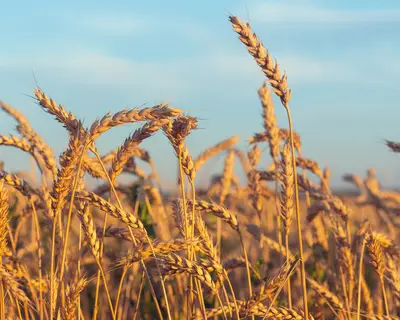RESEARCH TRIANGLE PARK, N.C. — A new study by RTI International, a nonprofit research institute, and several other research partners has found that over the next 30 years, climate change and increasing carbon dioxide (CO2) could significantly reduce the availability of critical nutrients like protein, iron and zinc. The total impacts of climate change and elevated levels of CO2 in the air are estimated to reduce growth in global per capita nutrient availability of protein, iron and zinc by 19.5, 14.4 and 14.6 percent, respectively.
The study was published in the peer-reviewed journal Lancet Planetary Health on Wednesday.
Using estimated changes in the productivity of agricultural commodities, data from the Global Expanded Nutrient Support (GENuS) model, and two data sets on the effects of CO2 on nutrient content, the researchers applied a global economic model of the agricultural sector to project per capita availability of protein, iron and zinc out to 2050 under alternative scenarios.
Improvements in technology and market adjustments are projected to increase crop yields over current levels by 2050, but these gains are substantially diminished by the negative impacts of climate change on the availability of nutrients in crops. While higher levels of CO2 can boost photosynthesis and growth in some plants, previous research has also found they reduce the concentration of key micronutrients in crops. The study found that wheat, rice, maize, barley, potatoes, soybeans and vegetables are all projected to suffer nutrient losses of about 3 percent on average by 2050 due to elevated CO2 concentration.
The effects are not likely to be felt evenly around the world, according to the study. Many countries currently experiencing high levels of nutrient deficiency are also projected to be disproportionately affected by lower nutrient availability in the future.
Nutrient reductions are expected to be particularly severe in South Asia, the Middle East, Africa South of the Sahara, North Africa and the former Soviet Union—regions largely comprised of low- and middle-income countries where levels of undernutrition are generally higher and diets are more vulnerable to harmful shifts from climate change.
“In general, people in low- and middle-income countries receive a larger portion of their nutrients from plant-based sources, which tend to have lower bioavailability than animal-based sources,” said Robert Beach, PhD, senior economist and fellow at RTI and lead author of the study.
The impact on individual crops can also have disproportionate effects on diets and health. Significant nutrient losses in wheat have especially widespread implications.
“Wheat accounts for a large proportion of diets in many parts of the world, so any changes in its nutrient concentrations can have substantial impact on the micronutrients many people receive,” added Beach.
“We’ve made a lot of progress reducing undernutrition around the world recently but global population growth over the next 30 years will require increasing the production of foods that provide sufficient nutrients,” said senior scientist at the International Food Policy Research Institute (IFPRI) and study co-author Timothy Sulser. “These findings suggest that climate change could slow progress on improvements in global nutrition by simply making key nutrients less available than they would be without it.”
This research was supported by the U.S. Environmental Protection Agency and the CGIAR Research Programs on Policies, Institutions, and Markets (PIM) and Climate Change, Agriculture and Food Security (CCAFS).

- A new study by RTI International and several other research partners has found that over the next 30 years, climate change and increasing carbon dioxide (CO2) could significantly reduce the availability of critical nutrients like protein, iron and zinc.
- The total impacts of climate change and elevated levels of CO2 in the air are estimated to reduce growth in global per capita nutrient availability of protein, iron and zinc by 19.5, 14.4 and 14.6 percent, respectively.
- Many countries currently experiencing high levels of nutrient deficiency are also projected to be disproportionately affected by lower nutrient availability in the future.
RTI International Media Relations:
